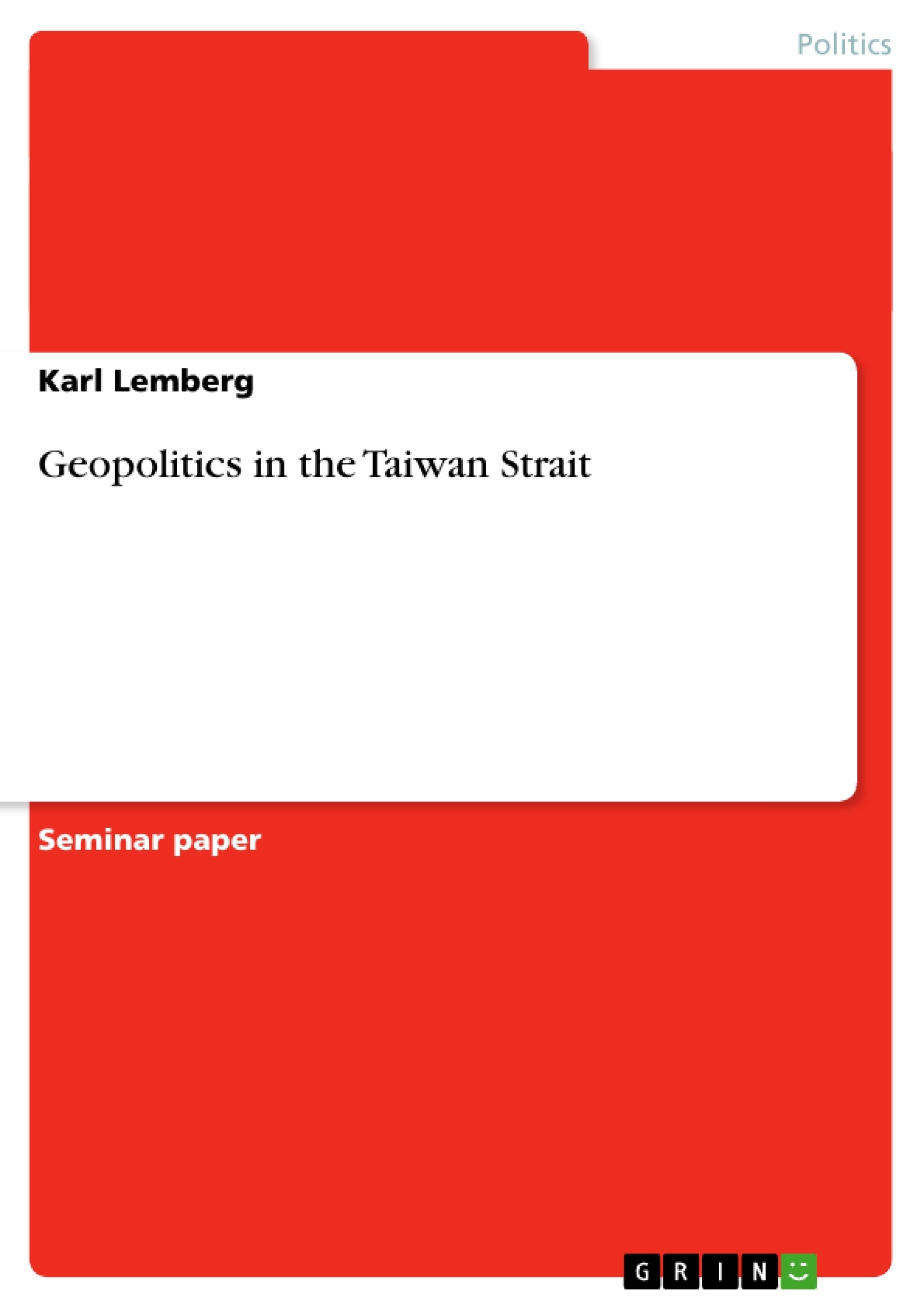After the end of the Cold War the Taiwan Strait is one of the remaining global ‘hot spots’. In fact, the Taiwan Strait “remains the locus of one of the most dangerous military confrontations in the world”, a fact that was underlined through the showdown during 1996 missile crisis when the U.S. send two carrier battle groups into the region in order to deter a hawkish mainland Chinese towards the Republic of China, Taiwan.
As we have evaluated during the seminar, the strategic focus of the United States has since the end of the Cold War clearly shifted from Europe to Asia (Brezinski: Die einzige Weltmacht, 1997). I have chosen to look more closely at the geopolitics of the Taiwanese-Chinese conflict theater and especially the involvement of another regional hegemon in East Asia, the United States of America. For 30 years (1949-1979) the United States was Taiwan’s principal patron tied in a mutual defense treaty that secured the tiny island republic’s stand against the highly populated communist mainland and emerging economic powerhouse. In 1979 the U.S. officially recognizes the People’s Republic of China which terminated official relations to Taipei and the mutual defense treaty. Yet, the same year, U.S. Congress’ Taiwan Relation Act ties Taiwan’s defense concerns close to American interest again. From then on, Washington is balancing its responsibility and security concerns for ROC on the one side and an interest in closer and stabilized relations with PRC. The Taiwan question - reunification, independence or status quo - bears not only geopolitical ramifications, but also has a cultural, economical, and political dimension. Yet, I will try to strap down this question to the military aspects of geopolitics.
Inhaltsverzeichnis (Table of Contents)
- INTRODUCTION
- MILITARY DIMENSIONS: FACTORS AND OPTIONS IN THE GEOPOLITICAL TRIANGLE ROC – PRC - USA
- STATE OF THE MILITARY
- WORST CASE SCENARIO
- A) MISSILE ATTACK
- B) AIR COMBAT
- C) MARITIME CONTROL
- MISSILE THREAT
- U.S. INVOLVEMENT
- THE LIKELINESS OF WAR
- SUMMARY & CONCLUSION
- REFERENCES
- ACRONYMS
Zielsetzung und Themenschwerpunkte (Objectives and Key Themes)
This paper aims to analyze the military dimension of the geopolitical conflict between China and Taiwan, focusing on the potential for a full-scale Chinese invasion. It investigates the current state of the ROC and PRC military forces, explores different conflict scenarios, examines the missile threat and proliferation, and ultimately examines the role of the United States in this complex equation.
- The military balance between China and Taiwan
- The potential for a Chinese invasion of Taiwan
- The role of the United States in the Taiwan Strait conflict
- The impact of missile proliferation on regional security
- The strategic implications of a Chinese military victory or defeat
Zusammenfassung der Kapitel (Chapter Summaries)
- Introduction: The paper begins by situating the Taiwan Strait as a “hot spot” in the post-Cold War world. It examines the historical context of the U.S.-Taiwan relationship and the shift in U.S. strategic focus toward Asia.
- Military Dimensions: Factors and Options in the Geopolitical Triangle: This chapter delves into the military capabilities of both China and Taiwan, highlighting the disparity in size and modernization efforts. It also outlines the potential for various conflict scenarios, from limited missile strikes to a full-scale invasion.
- State of the Military: This section provides a detailed analysis of the current state of the PLA and ROC military forces, comparing their equipment, manpower, and capabilities.
- Worst Case Scenario: This chapter explores the worst-case scenario for Taiwan – a full-scale Chinese invasion. It analyzes the potential phases of such an invasion, from the initial missile barrage to ground combat.
- Missile Threat: This section focuses on the significance of China’s Strategic Missile Force (SMF) and its nuclear capabilities, highlighting the impact on regional security.
Schlüsselwörter (Keywords)
The key themes and focus topics of this paper include the Taiwan Strait, the People's Republic of China (PRC), the Republic of China (ROC), military balance, conflict scenario, invasion, missile threat, proliferation, U.S. involvement, regional security, and geopolitical stability.
- Quote paper
- Karl Lemberg (Author), 2004, Geopolitics in the Taiwan Strait, Munich, GRIN Verlag, https://www.grin.com/document/45859



